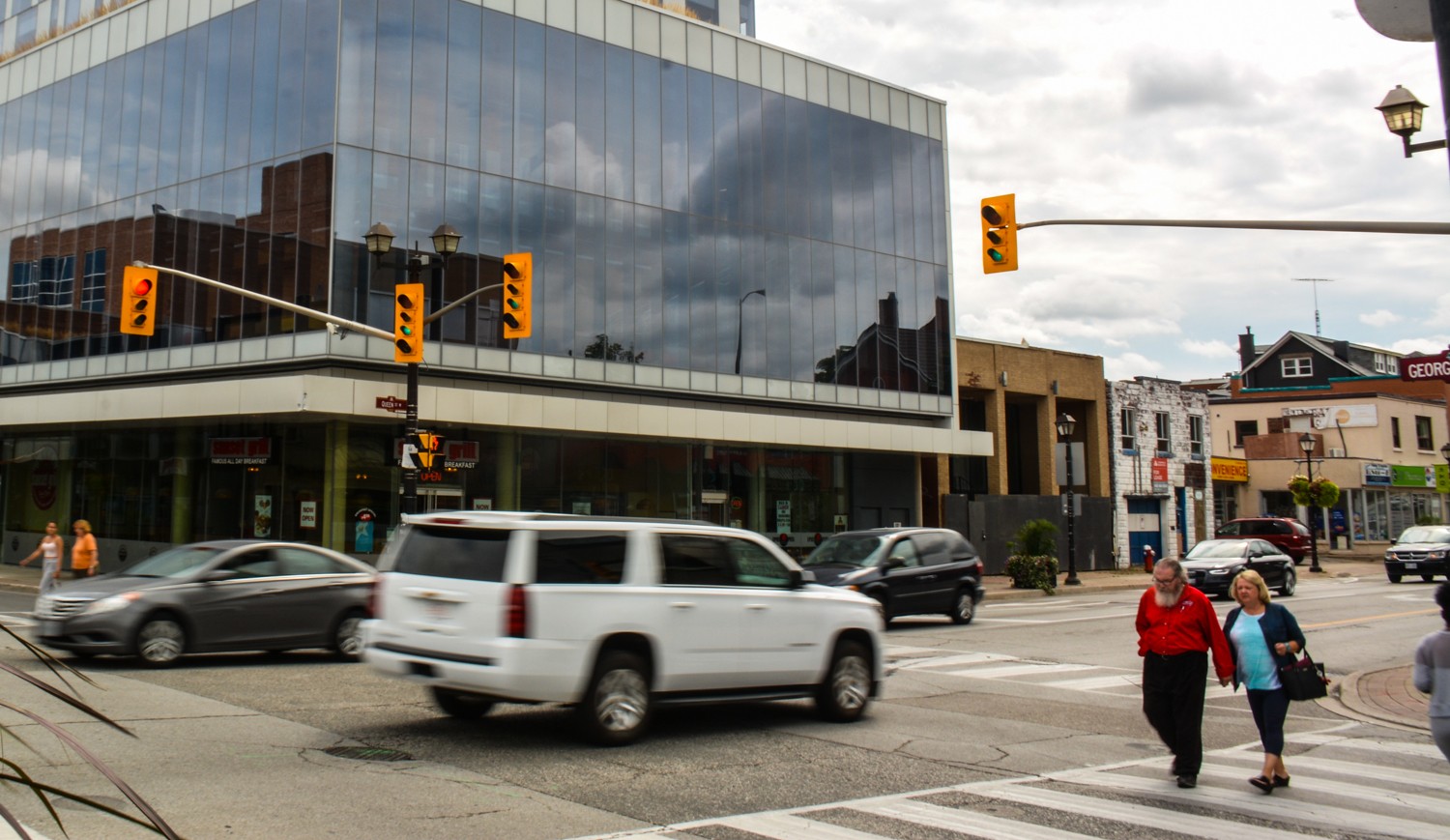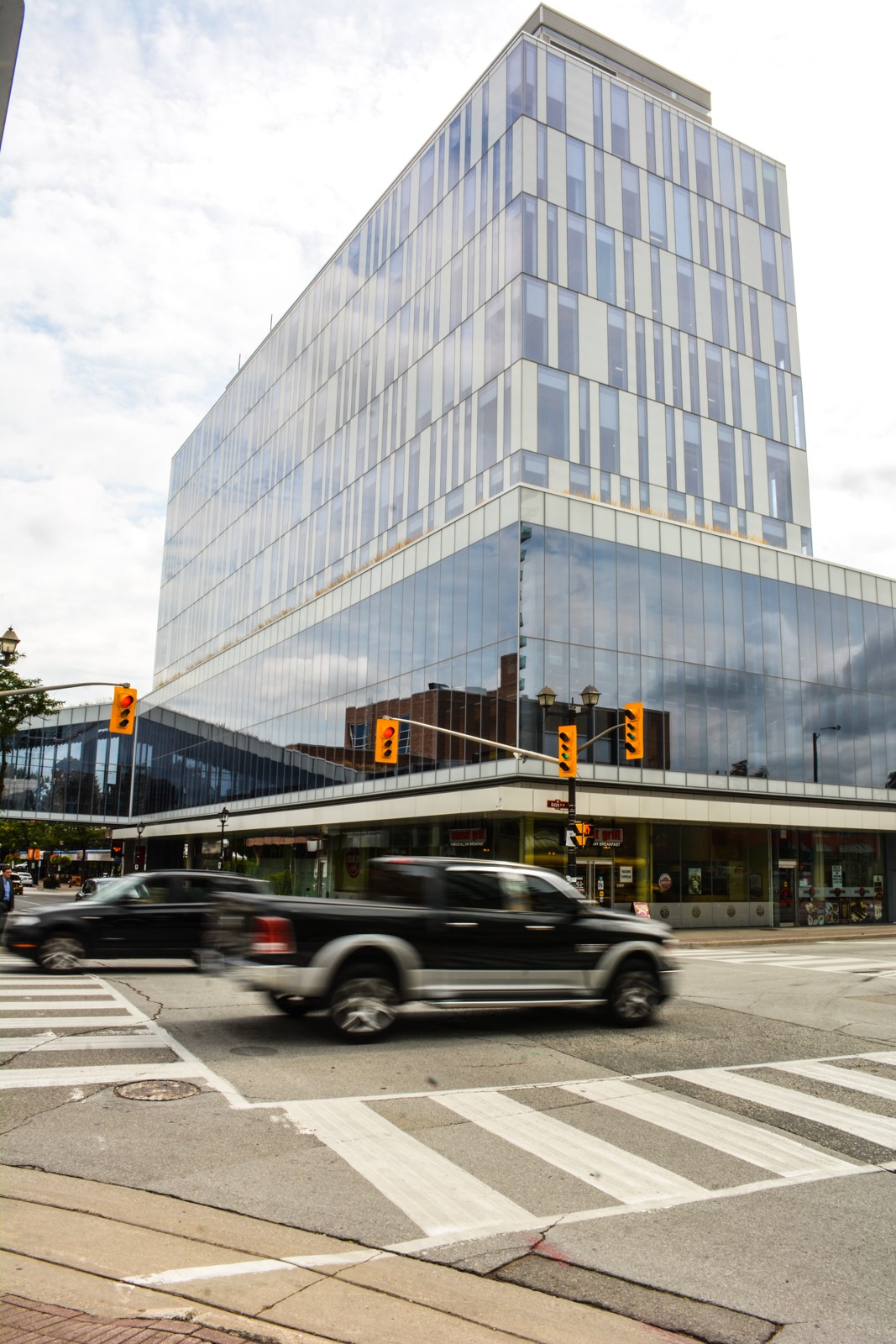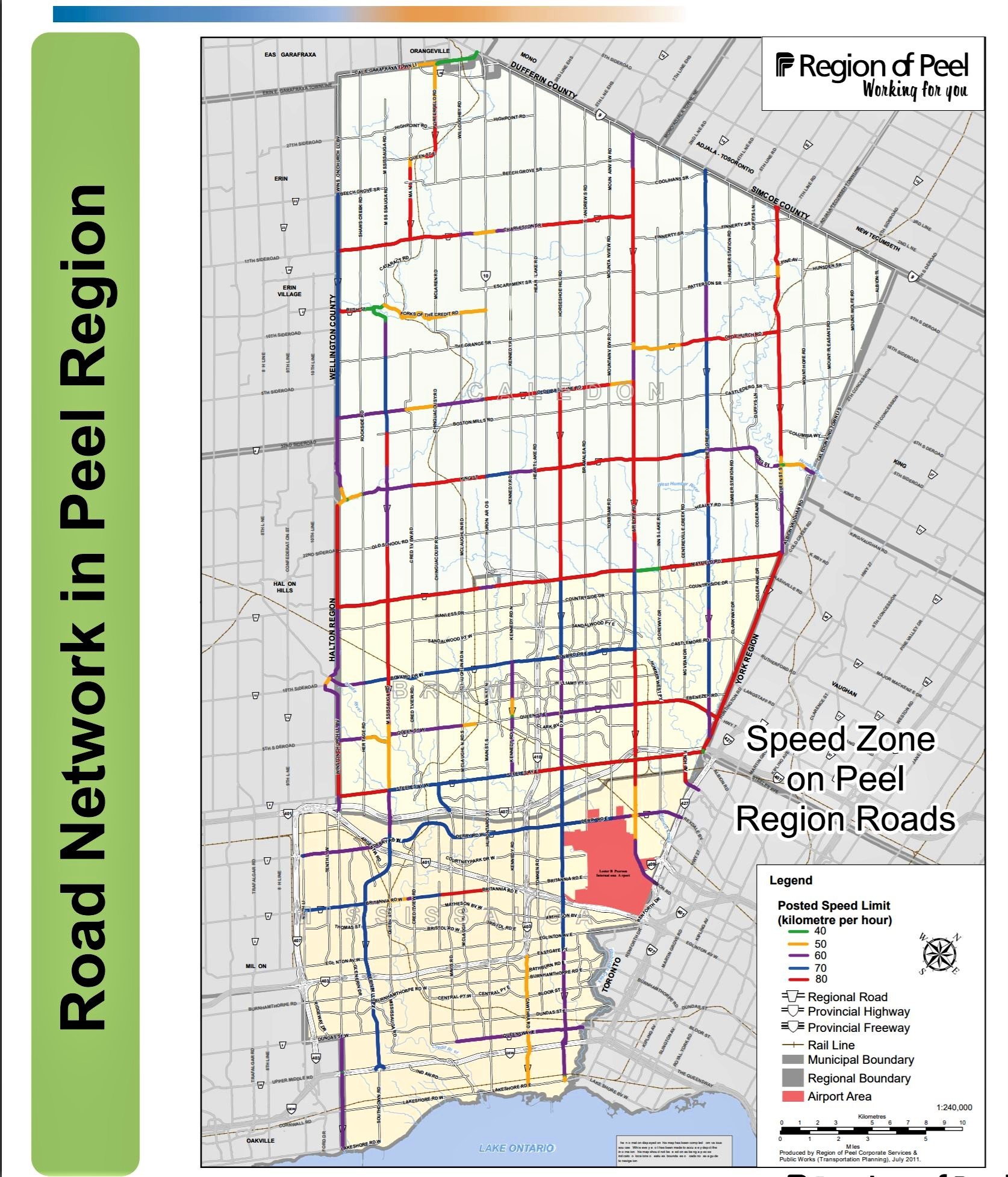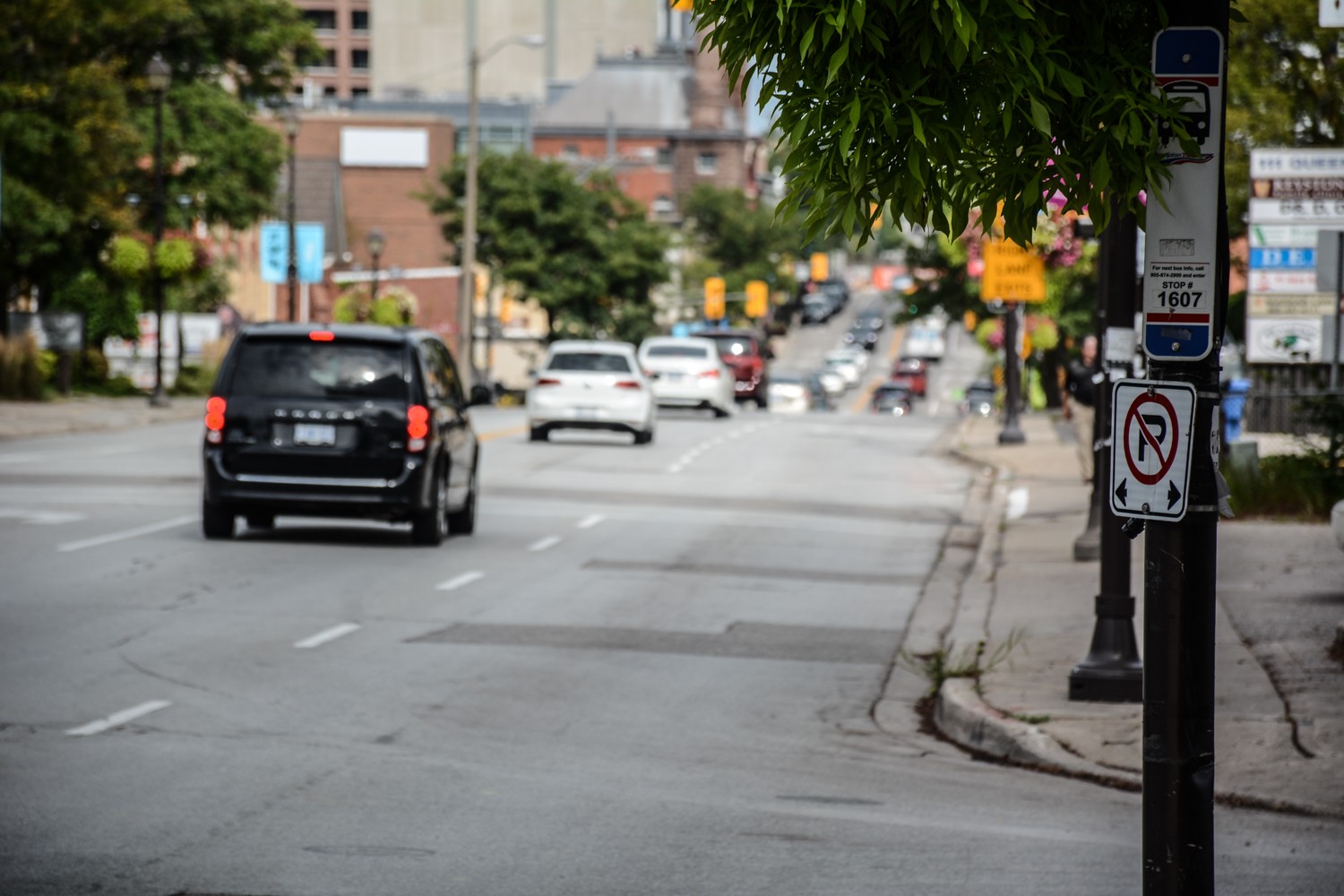
Over a hundred sections of road in need of ‘traffic calming’ in Brampton
Brampton, it must be said, is not a safe city to be a pedestrian. If one person is struck and killed, it is a tragedy. But if several are struck, they become statistics denoting a trend.
A woman believed to be in her 20s was struck by a car in Brampton on Monday. Last March, a 21-year-old man was struck near Clark Boulevard and West Drive; a 22-year-old woman was hit by a car the November before that; and a 37-year-old man died after he was hit by a car near Dixie Road and Clark Boulevard the August before that.
High-speed driving is often blamed in these situations. Speed reduces safe reaction time, meaning it takes more distance to safely bring a car to a halt. The City of Brampton has identified 102 sections of road that are in need of “traffic calming” — encouragement to slow down in areas 85 percent of motorists drive above the posted limit.
The worst culprit, according to a report that will be before council on Wednesday, appears to be Centre Street North between Williams Parkway and Queen Street East. The 2-kilometre stretch is driven by an average of 7,124 vehicles a day, and the city’s bad apples average 57.3 km/h. The posted limit in the residential area — which includes a school and a playground — is 40 km/h.

“Brampton is a rapidly growing city with a large commuting population and one of the highest vehicle trip rates within the Greater Toronto Area,” city spokesperson Alex Vesia told The Pointer in an email. “Faced with traffic congestion and delays on the main roads, people often look for quicker routes, which can lead to increased traffic volume, speeding and collisions on residential roads.”
Traffic calming is a series of physical changes to a road that force drivers to slow down when travelling through an area. Methods can include lane narrowing, forcing slower turns by reducing the radius of a corner, introducing roundabouts, and the well-known speedbump, among others.
“Traffic calming is part of the Neighbourhood Traffic Management Program, which aims to restore local streets to their intended function and improve the overall livability of a neighbourhood,” Vesia said. The program, adopted by the city in 2007, is a guide for managing traffic safely and includes calming measures.
This map shows that even some regional roads in Brampton allow speeds of 80 klm/hr

The city is currently in the process of installing calming measures on Mountainash Road from Countryside Drive to Peter Robertson Drive and on Richvale Drive from Bovaird Drive to Kennedy Road. The Mountainash Road project will, according to Vesia, employ “chicanes [narrowing], bump-outs, urban shoulders, and a raised median island.” The Richvale Drive project will use “painted and raised median islands and bump-outs.” Both are expected to be in place sometime this fall.
Calming measures can be found on Brisdale Drive, Worthington Avenue, Rutherford Road, Clarence Street, Conestoga Drive, Wexford Avenue, Father Tobin Road, Fletchers Creek Boulevard and Edenbrook Hill Drive.
Brampton’s car insurance rates are particularly high in part because of the high cost of claims in the city, according to Pete Karageorgos, director of consumer and industry relations at the Insurance Bureau of Canada. He previously told The Pointer that Brampton residents generate 9 percent more claims than the GTA average and 22.9 percent more than Ontarians overall. They also generate 8.7 percent larger claims than the other two Peel Region municipalities, Mississauga or Caledon, and 26.3 percent larger than other cities in Ontario.
Karageorgos praised the city’s push to calm traffic in the city. “It’s a good thing, obviously. Brampton is an area of concern … We know that rates in Brampton and parts of the GTA are higher than others.” Insurance industry experts have told The Pointer that because speeds involved in Brampton accidents are often higher than normal, significantly more damage is done to vehicles, pushing up the local cost of insurance.
Bramptonians pay on average $2,494 per year for their car insurance, about $400 more than people in Mississauga (which placed third on a ranked list by Kanetix.com) and almost $850 more than residents of Ajax, which placed 10th overall in the province.

“When you look at the reasoning behind that, [it’s] typically those areas that have higher numbers of crashes and more collisions,” Karageorgos said. “Lower speeds do reduce the number of crashes and the injuries. So it would make sense that Brampton is looking into the same type of philosophy.”
Some cities have come up with more creative solutions to traffic calming, for example painting a mural in the middle of a lower-volume intersection where a four-way stop isn’t called for. The idea is that putting a mural at a crossroads encourages drivers to slow down and focus, thus driving through more cautiously. Staff in Kitchener recommended in 2014 that the city adopt an intersection mural painting pilot project, and the first two murals were completed in July 2015. Cities like Halifax, N.S., and Portland, Ore., have adopted the idea as well, although data on how well the idea works remains sketchy.
Email: [email protected]
Twitter: @mansoortanweer
Submit a correction about this story


